Fuchsia Dunlop wants us all to eat more Sichuan food
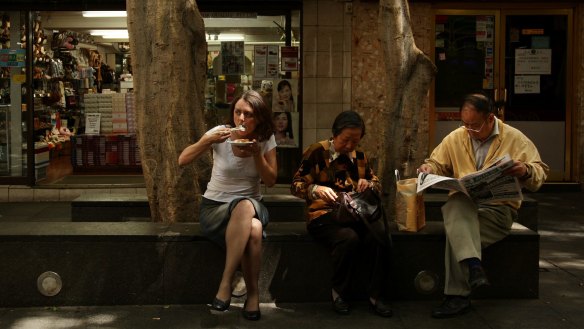
The Western world's most influential writer on regional Chinese dining wants everyone to eat more Sichuan food.
I like to think of Fuchsia Dunlop, author and culinary adventurer, as the latter-day Elizabeth David of Chinese cuisine, only arguably better company at a bar. See, the late David might have shared the trick to making a perfect two-egg omelette over a glass of chardonnay. But a night out with Dunlop could end with a cold beer in one hand and a Chengdu-style rabbit's head on a stick in the other, just as she did in her student days in Sichuan province.
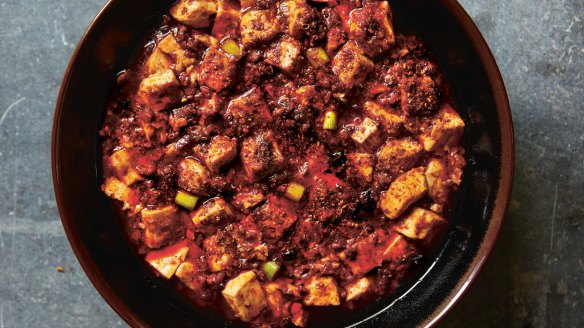
Over the past 13 years, Dunlop has authored five cookbooks (most recently a reprint of The Food of Sichuan) and her memoir, Shark's Fin and Sichuan Pepper. She writes much the way she cooks: with savour, sweetness and occasional slippery bits. Which is interesting, because her phone interview style is clipped, Oxbridge-academic-polite. Reading her work, subsequently, is like the literary equivalent of a librarian whipping her glasses off and shaking out her bun.
There is, for example, her essay Dick Soup, published in a 2014 edition of former food quarterly Lucky Peach, where she set about cooking with buck penises. "Over the course of my career, I have prepared and eaten many unusual ingredients, from sea cucumbers to frog ovaries, but until recently, I had maintained a maidenly innocence when it came to cooking penises of any species," she wrote.
So how did she come to be one of the most referenced Chinese food writers in the English-speaking world?
There's this Chinese saying which means that young people shouldn't go to Sichuan because they will just forget all their ambitions and spend their days playing Mahjong and eating. And to an extent, that's true.Fuchsia Dunlop
On paper, it all looks clearly thought out. She grew up in Oxford, where her mother taught English as a foreign language to international students and both her parents cooked with the flavours of Turkey, Sudan, Iran, Sicily, Colombia, Libya and Japan. Her early career involved sub-editing reports on the Asia-Pacific desk for the BBC and several years learning Mandarin as a second language ("my friends thought I was crazy. China felt very remote, obscure and irrelevant"). In the mid-'90s she secured a one-year British Council scholarship to study people and language in Chengdu, Sichuan's capital.
In reality, Fuchsia Dunlop's roadmap is all chance acts and accidents. "I mean, it was a sort of process of discovery and 'now this, now that, that sounds interesting…' There was no master plan."
While in Sichuan on a one-year visa, she decided to do a private course at the Institute of Higher Cuisine after falling in love with the dumplings, pickles, hotpots, fish cookery and the fact that the Sichuanese eat a chilli-laced meal three times a day. A few weeks before she was due to head home to the UK, Dunlop dropped into the cooking school to say goodbye. She bumped into the principal, who asked her to stay for another six months and do some professional training. She was the first Western woman ever to be asked to do so.
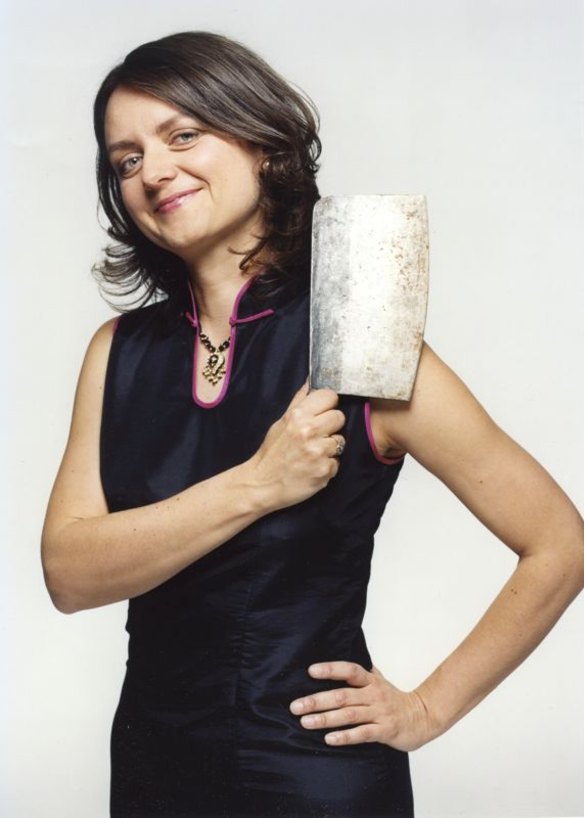
She stayed, and continued her love affair with Sichuan food, which has been going on for a quarter of a century now. "There's this Chinese saying which means that young people shouldn't go to Sichuan because they will just forget all their ambitions and spend their days playing Mahjong and eating," she says. "And to an extent, that's true."
Dunlop, who is based in London and is visiting Australia this month as a guest of this year's Melbourne Food & Wine Festival, has written extensively about her changing relationship with her local Chinatown. I'd like to know what she thinks about the idea that a Chinatown can help shape a city and break cultural barriers. "Chinatowns have been the first face of China for many people and they still are," she says. "But the thing about Chinatowns is that they have been a particular sort of stylised version of Chinese-ness, largely created by the Cantonese."
There's a cultural tremor you can taste, see and smell in Australia. If you spend enough time in any major capital city, you'll notice that while the Cantonese restaurants still loom large and grandly, there are fewer of them opening. In their shadows, it's the regional cuisines of mainland China moving in, with Sichuan province dominating. "It's the same everywhere," says Dunlop. "Cantonese is not the most fashionable cuisine. It's Sichuanese."
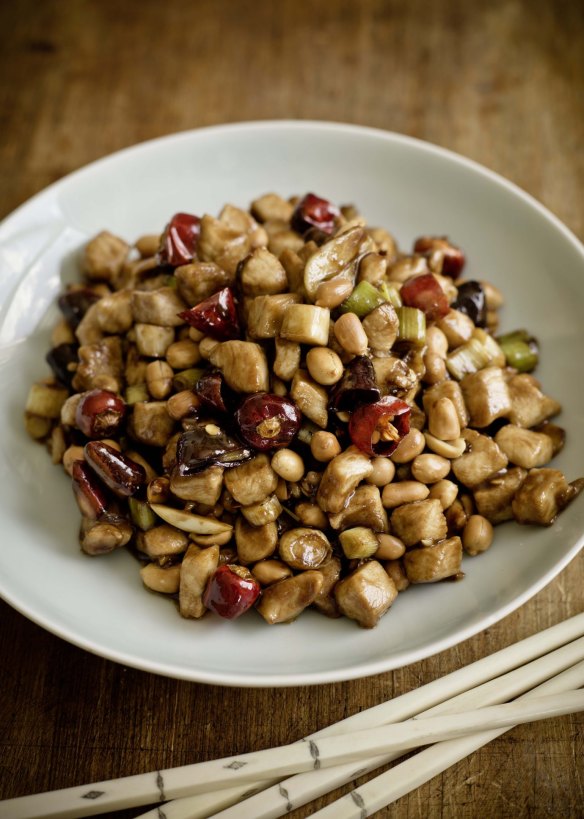
Some of that, she says, comes down to the current generation of Cantonese Australians not wanting to run restaurants. Victoria-based Chinese food historian Tony Tan agrees, adding that there are more migrants coming from the mainland than from the southern part of China. "And most of the people that come from mainland China are usually people from the north. People who are very much into spicy food. Sichuan food is really having its moment in the sun."
Sichuan food might be a cuisine with roughly 5000 dishes but for the average human, it's really defined by one central tenet. "Chillies are at the heart of Sichuan cooking," Dunlop writes in her book The Food of Sichuan. And it's the different uses of chilli that give Sichuan food its defining taste.
She writes about frying dried chillies in oil giving a "scorched flavour". Combining them with Sichuan peppercorns creates that "hot and numbing" flavour so many of us crave when we order kung pao chicken. Milder chillies, pickled and brined, help to create the savour you might have come to associate with those crisp moreish sticks of "fish-fragrant" eggplant. Ground chillies and chilli oil help to create that unique guaiwei, or "strange", flavour that is a mix of salty, spicy, salty and sweet tastes.
According to Dunlop, many of the older Sichuan cooks in China bemoan the fact that the subtleties of traditional Sichuan food are being lost with the younger generation, who favour the sensationalism of strong flavours, relying on chilli, oil and smoke. Indeed, in Australia, that's mostly what we see. Tan reckons Westerners have developed a taste for strong flavours. "Hot food is more accessible to all of us. Big, bold flavours are easily relatable."
The showstoppers in Australian Sichuan restaurants tend towards the audacious. Mapo tofu suspended in a slick of chilli oil, encrusted with Sichuan peppercorns that fizz and numb the lips (see Dunlop's recipe). A delicate piece of poached fish dressed in lurid hot oil at the table. Chopped-and-fried chicken or rabbit hidden under a dizzying amount of dried chillies.
I get the feeling two days on the ground in Chengdu with Fuchsia Dunlop would throw the very little I know about Sichuan food into even sharper relief – and I'd be glad of that. What we have in Australia barely scratches the surface of what Dunlop has experienced during her time in China.
"I have a lot of respect for Fuchsia Dunlop," says Tan. "She's one of those people who has actually made what she does an academic study as well as a cultural study of what Chinese food is all about. And even though she is a sinophile, it doesn't really matter because food culture does not belong to one race alone. This is exactly what we are doing here in Australia."
Fuchsia Dunlop is appearing at the Melbourne Food & Wine Festival: Sichuan Snack Fair, Saturday, March 22, and the Shed X talks, both at Queen Victoria Market. melbournefoodandwine.com.au
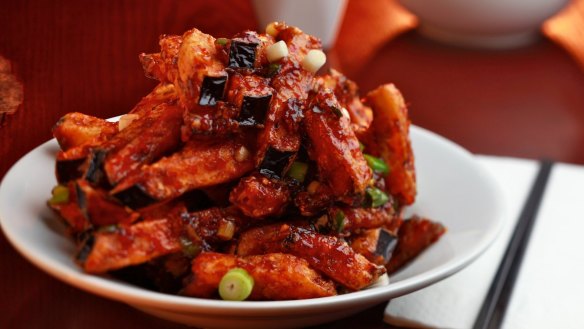
Get your chilli fix: Six Sichuan hot spots to try
SYDNEY
Red Chilli Sichuan Restaurant
A north-shore sister to the Dixon Street original, Red Chilli is one of the most established Sichuan chains in Sydney. Order the poached fish bathed in chilli oil and the ever-popular fried chicken bits.
272 Victoria Avenue, Chatswood
Spicy Joint
Take a number, join the queue and try not to get lost in the menu. It's a little slicker than some of the other restaurants on the Dixon Street strip, but the flavour is still there. Cool down with smashed cucumber and cold noodles doused in peanut sauce after hitting the brisket hotpot.
25-29 Dixon Street, Haymarket
Xing Xing Sichuan Dish
This is where you're eating if you're serious about Sichuan food in Sydney. Hit the Chengdu snack part of the menu for the beef hidden in beancurd jelly, go hard at the cold dishes and consider sharing the mapo tofu.
42-42a Dixon Street, Haymarket
MELBOURNE
There's a nightly show where people get dressed up in panda suits and dance for diners digging into braised pork ribs and thinly sliced ox tongue.
100 Victoria Street, Carlton
The fish-fragrant eggplant is a favourite here for a reason. There's no fish in the dish; rather, it contains the ingredients traditionally used in Sichuanese fish dishes. The result is crisp fingers of deliciousness. There's other stuff too, but, really, it's all about that eggplant.
176 Toorak Road, South Yarra
Da Long Yi
So you think you can hotpot? Think again. Start with a round of fried buns, and limber up. There are seven different soup bases to choose from and a world of meats and adventure from there. Take friends and go large.
398 Elizabeth Street, Melbourne
Restaurant reviews, news and the hottest openings served to your inbox.
Sign up